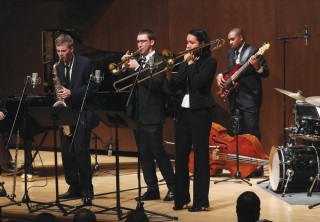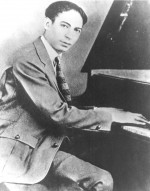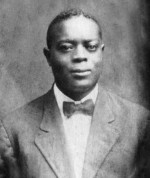Title

The Jazz Ensembles will explore the music of Jelly Roll Morton and King Oliver, two New Orleans legends.
(Photo by Richard Termine)I’m a big advocate of using the principles of earlier jazz to create new jazz,” says Michael White, the New Orleans-bred clarinetist and bandleader. He’ll guest star with the Juilliard Jazz Ensembles on April 13 at Paul Hall, in a much-anticipated concert called Federal Government and States’ Rights: The Music of Ferdinand Joseph “Jelly Roll Morton” Lamothe and Joe “King” Oliver. White is on the phone from his home in the Crescent City, where the concert’s tributees—Morton and Oliver—also originated. The principles he’s alluding to sharing with Juilliard students aren’t merely “earlier”; in actuality they constitute the earliest components that fall under the jazz rubric, whether it be in their rhythmic two-beat swing or the richness of their unique-for-the-time polyphonics and harmonies. Morton was an itinerant pianist and hustler who is thought by many to have written the first genuinely sophisticated forays into jazz composition. Oliver was a cornetist and bandleader whose legendary Creole Jazz Band introduced the world to a young trumpeter named Louis Armstrong, who would grow into one of jazz’s most enduring ambassadors.
Body
If the title of the concert suggests ties to the Reconstruction Era, its actual meaning is more metaphoric and evocative than period-specific or political. Aaron Flagg (B.M. ’92, M.M. ’93, trumpet), the acting chair and associate director of Juilliard Jazz, explains that the reference came from new Juilliard Jazz director Wynton Marsalis’s (’81, trumpet) shorthand for the differing approaches of the two bandleaders. “Wynton’s idea is that it speaks to the music as well as the characters of Morton and Oliver,” Flagg said by phone from his office. “Morton might be said to take a more federalist approach to his music, which is to say he controlled everything about it. As a result, what we hear is entirely his vision played out on the stage. Oliver, on the other hand, clearly incorporated the ideas of other musicians in the Creole Jazz Band into his music, specifically as it pertained to second trumpet player Louis Armstrong.”
What’s so surprising about the difference between the two is that it shows how varied jazz could be in even its most nascent stages. One of the hallmarks of the 1923 Chicago recordings of King Oliver’s Creole Jazz Band are Oliver and Armstrong’s incredible twin trumpet improvisations (called “breaks”). Though these were impromptu, the symbiosis between the two men often made that hard for listeners to believe. Still, whatever confidence they had in their abilities paled in comparison to Morton’s. He claimed to anyone who’d listen that he singlehandedly invented jazz at the turn of the century (most famously to Smithsonian music historian Alan Lomax), and even though that’s a bit of an exaggeration, White explains that many of the devices Morton urged his sidemen to employ did indeed transform and expand the jazz idiom. “I’m talking about things that were really not done before he did them,” White said. “Things like the use of ‘stop-time breaks’ or soloing over basically one chord like on the tune ‘Jungle Blues,’ which I’m pretty sure we’re going to play on the concert. As someone of French Creole heritage, he’d had formal music training, which meant he could write arrangements that had the immediacy of improvisation, which is something that would influence much of the jazz that came later, particularly Duke Ellington’s music.”
Despite New Orleans music’s foundational relationship to contemporary jazz, however, there are challenges in introducing students to a style that on the surface bears little resemblance to music of today. “Most students nowadays come to Juilliard knowing bebop and swing,” Flagg said, “but oftentimes unless they’ve grown up in the actual city of New Orleans their familiarity with Jelly Roll and King Oliver is limited. That’s not to say they’re not open to it once introduced. I think it’s easy for those of us who are familiar with the music to refer to it as old, but the truth is, for young people who’ve never encountered it before, it might as well be new.”






